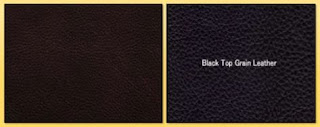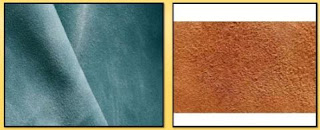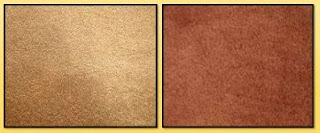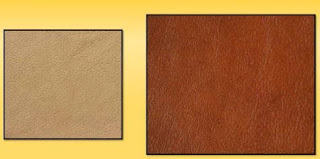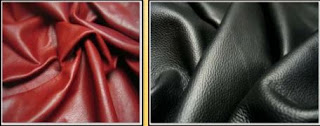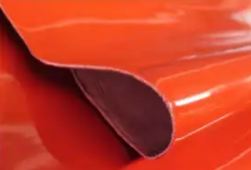Have you ever wonder about how these leather products such as bags, jackets, belts, and purses are made? Who makes them? From where does all this leather business started? and How big this leather industry is?
Today we will investigate the leather industry and find out the most interesting facts about leather that you are unaware of till now.
We will start out an investigation to know what exactly leather is, and then we will go further to know from where does it come and how it is processed for making some of the most luxurious products of all time.
Later in this article will take you through the laws and regulations imposed by the Indian government on leather industries.
You might have many doubts about leather which you want to ask, don't worry we added on FAQs section to clarify all your doubts about leather.
Are you Excited? Let's begin.
What is leather?
Leather is animal skin and hides which are obtained from tanning and chemical treatments. Leather is derived commonly from cattle, sheep, goats, reptiles, and aquatic animals such as alligators and seals.
Its strength, flexibility, and durability make it a perfect material for manufacturing luxurious products for elite classes in developing and developed nations.
At present Italy is the biggest consumer of leather produced in the world with its competitors China and Vietnam being the biggest exporter of leathers.
Types of leather:
- Its Source
- Surface Grain
- Tanning
- Finish
1. According to Source, leather is obtained from these sources:
| Classification by Source | ||
|---|---|---|
| Cattle Hide | Goat Skins | Sheep Skins |
| Mule | Pig Skins | Deer Skin |
| Bison Skin | Ostrich leather | Kangaroo Leather |
| Eel Skin | Crocodile | Horse |
| Snake Skin | Seal Skin | Shark Skin |
| Lizard | Walrus | Shagreen |
| Yak | Whale | etc. |
2. According to Surface Grain, leather is classified as follows:
- Full-Grain: Hides that have not been sanded, buffed, or snuffed to remove imperfections on the surface of the hide.
- Top Grain: Its surface has been sanded and a finish coat is added, which produces a soft plastic feel with less breathability. These are cheap and have a greater stain resistance compare to full-grain leather. Top grain leather wallets for men are among popular products made with top grain leather.
- Corrected Grain: Any leather on which artificial grains are applied to its surface.
- Split: Split leather is created from the fibrous part of the hide which is left over after taking off the top hide.
- Suede: This is the leather from which your purses, jackets, Wallets, shoes, and furniture coverings are made. Suede leather is made with the underskin of animals.
- Nubuck: Nubuck leather is made from the top side ( grain side) of leather. It is sanded and dyed after tanning to make it look ultra suede, though it is fundamentally different from suede leather but is treated in the same way.
3. According to Tanning:
Tanning is the process by which hides or skin of animals is processed to convert them into leather. The place where tanning of hides and skins is done is called tannery.
According to tanning leather is classified as:
| Classification on Tanning | |
|---|---|
| Chrome tanned | Vegetable-tanned |
| Alum tanned | Aldehyde tanned |
| Synthetic tanned | Formaldehyde tanned |
| Brain tanned | Oil-tanned |
| Rose tanned | Fur tanned |
| Raw tanned | |
4. According to Surface finish:
According to surface finish, leather is classified as follows:
- Aniline: Aniline is a dye with transparent ( translucent) quality, that is helpful in making wrinkles of the leather appear even after dying. It gives a structure look to the leather.
- Semi-aniline: Soft and thin, its surface can be felt and it is highly sensitive to light along with having good resistance capabilities this leather has a luxurious look.
- Pu coated: In this leather, the grain side is coated with chemicals such as polyurethane. This gives a consistent surface to the leather and makes it a much cheaper option to buy. The coating makes the leather much flexible than genuine leather.
- Pigmented: The coating on pigmented leather is done more than Pu coated leather to make the color look more even with more durability. It is called pigmented because the outside face of the hide is coated with a pigmented resin and then a subsequent coating for its durability.
- Patent: Patent leather has its own history for now we will concentrate on its core values. It is nothing but a coated leather with a glossy and shiny finish. In history, the coating was done with an oil-based solution but in the modern age, it is done with plastic coating.
5. Other types of Leather:
Along with this, there are some other kinds of leather also available these are:
- Kid Leather
- Napa Leather
- Chamois Leather
- Glazed
- Embossed
- Butt Leather
- Bonded Leather
- Bycast Leather
- Russia Leather
Uses of leather in our daily life:
| Leather as Body Items | ||
|---|---|---|
| Shoes | Men/Women Belts | Garments |
| Leather Jackets | Bracelets | Hats |
| Men/Women Boots | Gloves | Sandals, etc |
| Goods Containers | ||
|---|---|---|
| Wallets | Phone holders | Spectacle case |
| Laptop bag | Purses | Card Holder |
| Briefcase | Portfolio Holder | Keyholder |
| Leather for Home and office | ||
|---|---|---|
| Sofa set | Footrest | chair cushion |
| Armrest | Mats | Furniture for pets |
| Leather couch | Decorative piece | Bed's Head sidewall |
| Other items made of leather | ||
|---|---|---|
| Drums | Skins | Praying Mats |
| Amulets | wall handings | Boots |
| Sports Ball | Sports gear | college/traveling Bags |
Leather Industries in India:
India fulfills the demand of 12.93% of the world's leather production of hides and skins. The total Export of leather from India is around 5 Billion dollars in 2019-2020 and rising.
For the promotion of the export of leather products, there is a setup of a non-profit organization that has a membership base of more than 3500 companies.
Some companies deals in manufacturing leather products and some only process hides and skins to export them to foreign countries
Top 10 Leather manufacturing companies in India:
Here is the list of the top 10 leather manufactures in India. You must be aware of some of the brands but many of them are working in the export business and only deal in raw materials for big brands.
| Top 10 leather Manufacturers (India) |
|---|
| Bata India |
| Bhartiya International Ltd |
| Farida Group |
| Lakhani Armaan Group |
| Liberty Shoes Ltd |
| Mayur Uniquoters Ltd |
| Metro Brands Ltd |
| Mirza International Ltd (Red Tape) |
| Relaxo Footwears Ltd |
| Superhouse Ltd |
How to check if the leather is real or fake?
Advantages of leather over its counterpart:
Flexibility: Leather is flexible material it can be hard and soft at the same time. It can be stretched but that doesn't impact its strength.
Style & Status: In many places leather is used to reflect the rich lifestyle. It adds a different but stylish look to the personality.



